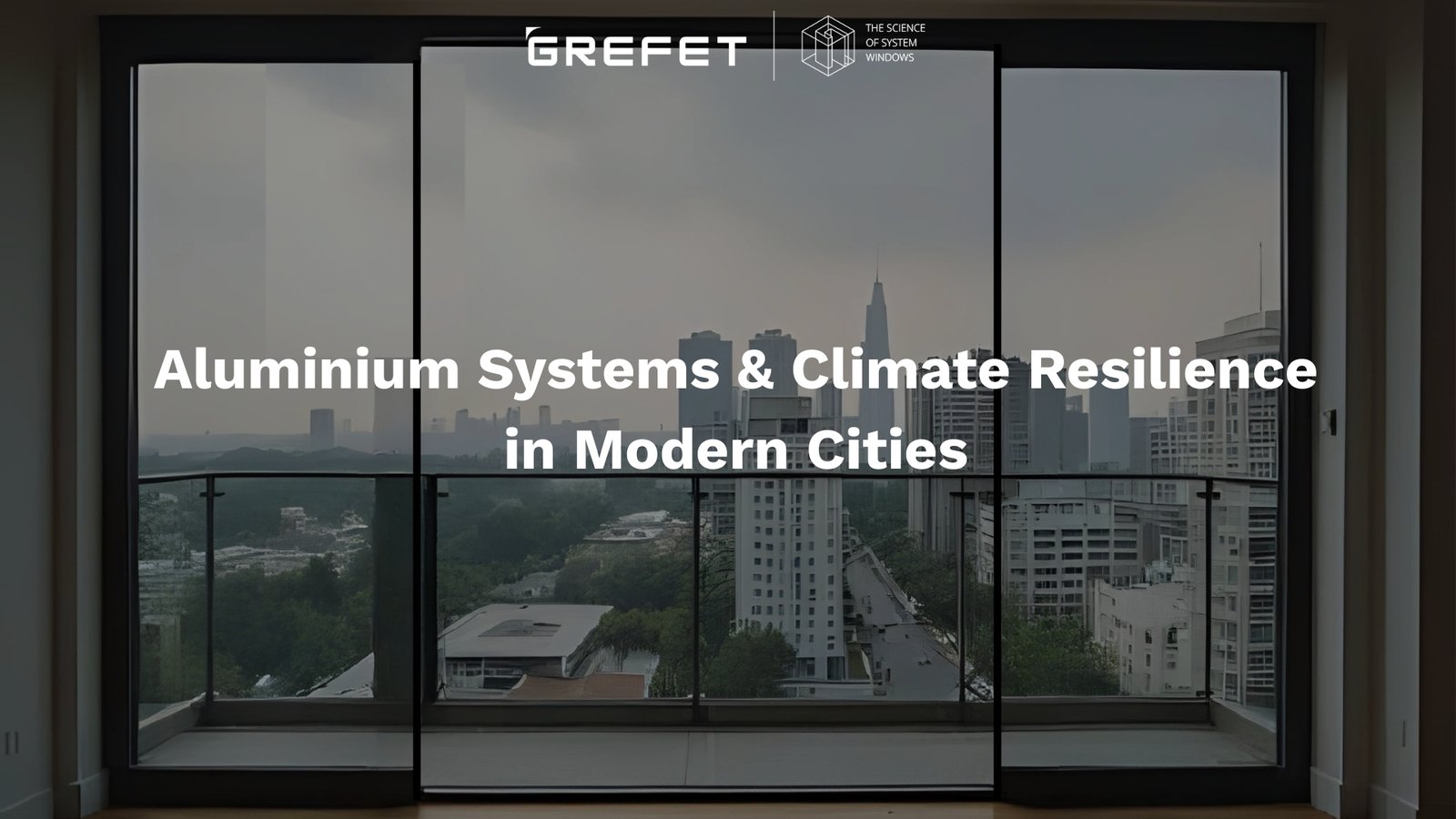Urban environments are under increasing pressure from climate change. Rising temperatures, unpredictable monsoons, urban flooding, and pollution are reshaping how cities are designed. For urban designers, architects, and builders, the question is clear: how can we create structures that don’t just withstand these challenges but actively improve the resilience of cities? This is where aluminium systems & climate resilience in modern cities go hand in hand.
At GREFET, we’ve seen how system-based aluminium windows and doors are no longer just about aesthetics. They are becoming a crucial component of climate-conscious design.
Why Aluminium Systems Matter for Climate Resilience
The durability and adaptability of aluminium make it a material of choice for climate-responsive architecture. Unlike wood or uPVC, aluminium maintains structural integrity under extreme weather conditions, from heavy rainfall to high UV exposure.
- Strength to Weight Ratio — Lightweight yet robust, aluminium systems can handle large glass spans without compromising on performance.
- Corrosion Resistance — Powder-coated or anodized aluminium withstands humidity, coastal air, and heavy monsoons.
- Design Flexibility — Customizable frames enable architects to adapt to specific climate zones without losing visual appeal.
In short, aluminium systems are not just functional, they’re future-proof.
Aluminium Systems & Climate Resilience: Energy Efficiency at Scale
One of the most pressing climate challenges for urban designers is reducing building energy consumption. Aluminium systems can be engineered with thermal insulation, double or triple glazing, and airtight sealing to minimize heat gain and loss.
- In hot climates, insulated aluminium windows reduce air-conditioning loads.
- In cold regions, thermal efficiency prevents heat loss.
- In mixed climates like many Indian cities, adaptive designs ensure year-round comfort.
By focusing on aluminium systems, urban designers can contribute directly to climate resilience through sustainable energy management.
Floods, Rains, and Wind: Aluminium Systems in Extreme Conditions
Climate resilience also means designing for sudden events, flash floods, strong winds, and intense rains. System aluminium windows and doors are tested for water tightness, wind load resistance, and air permeability.
- Multi-point locking systems ensure safety during windstorms.
- Drainage channels in the frame prevent water leakage indoors.
- High-performance gaskets protect interiors from dust and pollutants, which are rising concerns in urban centres.
These features make aluminium systems a frontline defense in climate-adaptive architecture.
Urban Aesthetics and Sustainable Living
Beyond resilience, cities must also remain liveable and visually inspiring. Aluminium allows for slim profiles, wide spans, and integration with glass that maximizes daylight while reducing artificial lighting.
For designers, this means striking the balance between sustainability and beauty: climate-conscious buildings that don’t compromise on modern aesthetics.
What Urban Designers Should Prioritize
For urban designers, the checklist is clear:
- Opt for system-based aluminium solutions, not generic profiles.
- Prioritize energy performance certifications (U-value, SHGC, acoustic ratings).
- Design for local climate realities — humidity, pollution, seismic activity.
- Ensure long-term maintainability through modular, service-friendly systems.
Building Future-Ready Cities with Aluminium Systems
As cities continue to adapt to climate change, resilience is no longer optional, it’s essential. Aluminium systems & climate resilience offer a pathway for urban designers to build sustainable, safe, and energy-efficient structures.
At GREFET, we believe in empowering architects and designers with aluminium systems that don’t just meet today’s needs but anticipate tomorrow’s challenges. Because resilient cities start with resilient choices.


